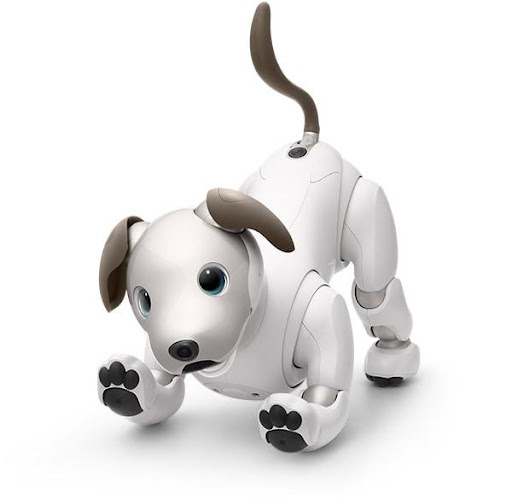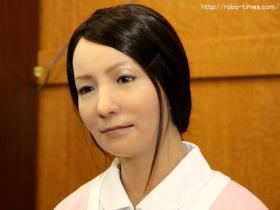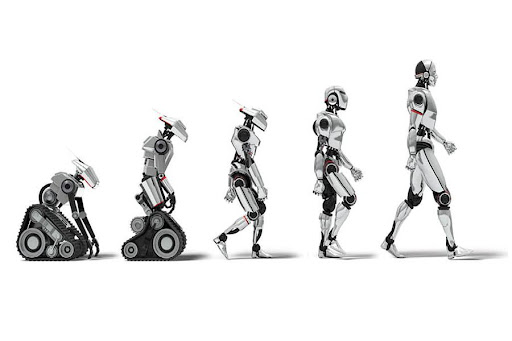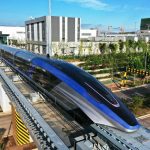For quite some time now, robots have been an essential element of modern life. Technology has already made robots a part of our everyday lives, but this trend is only expected to accelerate. Robots are being created throughout industries, from manufacturing to healthcare, to carry out jobs that people avoid due to risk, boredom, or inability. This article will discuss where robots and robotics are headed, as well as the advantages, disadvantages, and effects they may have on human civilization in the future.
Benefits of Robots
There are several ways in which robots help people and the world as a whole. First, they are capable doing things that people cannot, like as investigating hazardous situations or defusing explosives. More efficiency and output may be achieved since robots can carry out jobs that are too monotonous for humans, such as in an assembly line. Robots also have the potential to carry out activities that are physically or mentally taxing for humans, such as precise surgery or space exploration.
Challenges of Robotics
Although there are many advantages to using robots, there are also some disadvantages. The replacement of human labor is a major obstacle. Robots may eventually take over certain human occupations as they become more commonplace in the workplace. Moreover, if not developed or regulated appropriately, robots might endanger human lives. As a result, it is crucial to guarantee that robots are built with safety in mind and that their usage is properly governed.
Impact on Society
It’s conceivable that robots will have a major effect on our culture. The economy is one area that will feel the effects. The increased presence of robots in the workplace is expected to cause a change in the character of work and the set of abilities employers seek in potential employees. This may lead to a decline in the need for human work, but it may also lead to the development of new fields that require whole new sets of abilities. As robots grow increasingly integrated into everyday life, they may potentially alter the dynamics of human relationships.
Robots in Healthcare
The healthcare industry is one that stands to benefit greatly from the introduction of robots. There are several ways in which robots might be employed to enhance medical practice and benefit patients. For instance, they may improve surgical accuracy, which in turn benefits patients. Patients may also benefit from robot aid with tasks like mobility support and vitals monitoring. In addition, robots may be utilized to carry out mundane duties like drug delivery, freeing up human caregivers to concentrate on more intricate jobs.
Robots in Manufacturing
Robots are also expected to have a substantial influence on the manufacturing sector. Assembly line work is an example of a duty that lends itself well to robot assistance since it is both repetitive and physically demanding. As a result, production and efficiency may increase while expenses decrease. Welding and dealing with hazardous chemicals are two examples of activities that robots can accomplish that humans should not.
Famous real robots
Sophia
Hanson Robotics’ Sophia is a humanoid robot. Since her 2016 debut, she has gained notoriety thanks to her sophisticated AI and convincing human likeness. Below are just a few of the many interesting things about Sophia:
- Sophia can recognize human faces and store that information in her memory.
- She can convey her feelings via her over sixty distinct expressions.
- Sophia has been featured in the United Nations and on the cover of Elle magazine, among other prestigious venues and publications.
- Sophia, a humanoid robot, was granted citizenship in Saudi Arabia in 2017.
- Sophia has natural language processing, which enables her to have conversations and provide answers to queries. She has served in various roles, from assisting customers to teaching students.
- Sophia’s technology will be further developed by Hanson Robotics, with the final objective of creating a robot with human-level intelligence and creativity

Aibo
Sony’s Aibo line of robotic pets is designed and manufactured by the company. Some fun information about Aibo:
- When the first Aibo hit store shelves in 1999, it became a best-seller.
- Aibo is programmed to act and behave like a natural dog, including wagging its tail, obeying voice orders, and recognizing its owners.
- Since Aibo has artificial intelligence, it can learn new skills and adapt to its surroundings. Over time, it may even grow a personality of its own.
- Aibo has several sensors and cameras that enable it to perceive and respond to its surroundings. It can, for instance, navigate around obstacles, monitor people’s emotions, and engage in game-play.
- Sony revived its Aibo robot after 12 years by launching a brand new model in 2018. The sensors are upgraded, and the battery lasts far longer than in previous iterations.
- A significant group of Aibo owners and fans online regularly interact and trade information related to their robotic pets.

Atlas
The robotics firm Boston Dynamics, which was formed in 1992, created the Atlas humanoid robot. Interesting information about Atlas includes the following:
- Atlas is around 165 pounds and reaches just over 6 feet tall. To that end, it is programmed to walk, run, and leap much like a person.
- Many different types of sensors and cameras give Atlas the ability to see and respond to its surroundings. It has a number of useful features, including the ability to sense and avoid obstacles and remote control by joystick or other device.
- Over the years, Boston Dynamics has released many versions of Atlas, each with upgraded hardware and features. Modern versions of Atlas can open doors and execute backflips, among other hard jobs.
- Disaster relief initiatives and military operations are only two of the many places Atlas has been put to use. Because of its superior capabilities, it can be put to service in situations where humans’ safety or well-being would be jeopardized.
- Boston Dynamics has produced many films showing Atlas carrying out a variety of activities, each of which has been met with tremendous acclaim.

Actroid
The Actroid line of robots was created by Kokoro Company Ltd., a Sanrio subsidiary. Intriguing Actroid details include the following:
- Actroid is often utilized in front-of-house positions like customer service and reception because of its ability to convincingly replicate human behavior.
- Actroid was first introduced in 2003, and ever since then, it has undergone extensive development and refinement.
- Actroid can read its environment and react appropriately because to its many sensors and cameras. Faces, gestures, and voice instructions are just some of the things it can decipher.
- Actroid has seen employment in many different arenas, including conventions, galleries, and even amusement parks. Human-robot interaction research has also made use of this technology.
- Actroid’s usage has been met with controversy and criticism because to the high degree of realism it achieves in look and movement. Concerns have been raised that Actroid may one day be utilized to replace humans in factories and other labor-intensive sectors.
- Kokoro Company is committed to advancing Actroid technology in order to build robots with more lifelikeness and versatility.

Is robots going to take human place in future
Robots replacing humans is a complicated question. Even though we can’t predict the future, we can observe that the rise of automation and robotics is already reshaping many sectors of the economy and the nature of work itself. Many of the jobs that people perform today may be taken over by robots in the not-too-distant future, especially those that are extremely dangerous or need a lot of repetition. You may find related job openings in the transportation sector, the medical field, and other related areas.
However, there are also many people who believe that robots won’t be able to replace humans in the workplace, but will instead serve to complement human efforts. Human qualities like creativity, critical thinking, and emotional intelligence are predicted to remain in demand even if robots can do certain activities more efficiently and effectively than humans.
Conclusion
In conclusion, robotics has advanced much in recent years, and the prospects for robotics and automation in the near future are promising indeed. While it’s true that some worry robots will take away human occupations, the reality is more likely to include robots complementing human workers to increase output and efficiency. Robots might radically alter our daily lives and the way we do business across a wide range of sectors, creating both exciting new possibilities and difficult new problems for humankind. It will be crucial for legislators, business leaders, and ordinary citizens to think about the ethical and social consequences of more complex robots and collaborate to guarantee that the advantages of automation are distributed fairly and equitably.
About Author: The content is written by Shagufta. She has been writing article on technological innovations for the past six years.














